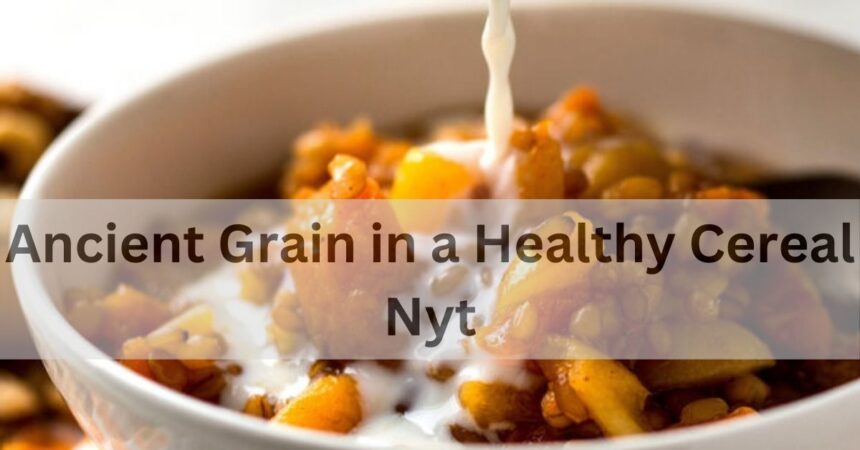Introduction to ancient grains and their history
Ancient grains have been gaining popularity in recent years, but their history stretches back thousands of years. These nutrient-dense seeds and cereals were staples in early civilizations, providing sustenance for our ancestors long before modern agriculture transformed the way we eat. Now, as people seek healthier dietary options, ancient grains are making a comeback—especially when they’re incorporated into delicious breakfast cereals.
Imagine starting your day with a bowl filled not just with flavor but also packed with benefits from nature’s original superfoods. From quinoa to farro and spelt to teff, these ancient varieties boast impressive nutritional profiles that can elevate any healthy cereal. But what makes them stand out compared to contemporary grains? And how can you seamlessly integrate them into your morning routine?
Let’s dive deeper into the world of ancient grains and uncover why they deserve a spot on your breakfast table!
The nutritional benefits of ancient grains in a healthy cereal
Ancient grains are nutritional powerhouses packed with essential vitamins and minerals. These grains, such as quinoa, farro, and spelt, offer a rich source of dietary fiber that aids digestion and promotes gut health.
Unlike many modern cereals, which can be stripped of nutrients during processing, ancient grains retain their wholesome goodness. They provide a balanced profile of complex carbohydrates that fuel energy levels without the sugar crashes associated with conventional options.
Moreover, these grains are often gluten-free or lower in gluten than modern varieties. This makes them an excellent choice for those sensitive to gluten but still craving hearty breakfast choices.
Additionally, ancient grains boast higher protein content compared to typical cereals. This protein boost helps maintain satiety throughout the morning while supporting muscle health and recovery after workouts. Including ancient grains in your cereal means you’re nourishing your body from the very start of the day.
Comparison between ancient grains and modern grains
Ancient grains have been cultivated for thousands of years. They include varieties like quinoa, farro, and spelt. These grains are renowned for their robust nutritional profiles.
Modern grains, such as wheat and corn, dominate today’s food landscape. They often undergo heavy processing to enhance yield and shelf life. This can strip them of essential nutrients.
In contrast, ancient grains tend to retain more fiber, vitamins, and minerals due to minimal processing. Their unique flavors add depth to dishes too; think nutty quinoa or earthy farro.
Moreover, many ancient grains are gluten-free or contain lower levels of gluten compared to modern options. This makes them appealing for those with sensitivities.
While modern grains may offer convenience in cooking and baking, they often lack the diversity that ancient grains provide in taste and nutrition.
The environmental impact of choosing ancient grains
Choosing ancient grains can significantly benefit the environment. These grains, such as quinoa, farro, and spelt, often require fewer resources to grow compared to modern varieties.
Ancient grains are typically more resilient. They thrive in diverse conditions and are less dependent on chemical fertilizers and pesticides. This natural hardiness reduces soil degradation and promotes biodiversity.
Additionally, many ancient grain crops contribute to better land management practices. Their deep root systems help prevent erosion and improve soil health over time.
By opting for these grains in your diet, you’re supporting sustainable farming methods that honor traditional agricultural wisdom. This choice not only nourishes your body but also helps preserve our planet’s ecosystems for future generations.
As consumers become more conscious of their food choices, embracing ancient grains is a small yet impactful step toward fostering environmental sustainability in agriculture.
How to incorporate ancient grains in your diet
Incorporating ancient grains into your diet can be simple and delicious. Start by swapping out traditional cereals for those that feature quinoa, amaranth, or spelt.
You can also use these grains as a base for salads. Toss cooked farro with seasonal vegetables and a light dressing for a nutritious meal.
Another option is to blend ancient grains into smoothies. Adding ground oats or millet gives extra fiber without altering the taste significantly.
For breakfast, try pancakes made with buckwheat flour instead of regular flour. The nutty flavor pairs well with maple syrup or fresh fruit.
Experimenting in the kitchen opens up possibilities, so don’t hesitate to mix ancient grains into soups and stews too. Their unique textures enhance any dish while boosting its nutritional profile.
Look for snacks like granola bars featuring millets or teff; they’re perfect on-the-go options packed with health benefits.
Delicious and healthy cereal recipes using ancient grains
Start your morning with a bowl of ancient grain oatmeal. Cook up quinoa or farro and top it with fresh fruits, nuts, and a drizzle of honey. This combination offers texture and flavor that will keep you satisfied.
Try making a breakfast parfait using spelt flakes layered with Greek yogurt and mixed berries. The nutty taste complements the creaminess perfectly.
For something unique, whip up an amaranth porridge flavored with cinnamon and topped with sliced bananas. This dish is packed with protein while remaining gluten-free.
If you’re in the mood for granola, mix millet or teff with oats, seeds, and natural sweeteners like maple syrup. Bake until crispy for a crunchy treat that’s great on its own or sprinkled over yogurt.
Each recipe showcases the versatility of ancient grains while delivering deliciousness at every bite—perfect for any healthy cereal lover!
Conclusion: Why you should consider adding ancient grains to your breakfast routine
Adding ancient grains to your breakfast routine can be a game-changer. These grains are not just relics of the past; they bring a host of nutritional benefits that modern cereals often lack. Packed with fiber, protein, and essential nutrients, they support digestive health and provide long-lasting energy.
Opting for ancient grains over more processed options contributes positively to the environment as well. They typically require fewer resources to grow and help maintain biodiversity in agriculture. This choice doesn’t just benefit your health—it supports sustainable farming practices too.
Incorporating these wholesome ingredients into your meals is easier than ever. From quinoa porridge to spelt granola, there are endless ways to enjoy their unique flavors and textures at breakfast.
So next time you’re reaching for cereal on busy mornings, consider choosing an ancient grain in a healthy cereal NYT-style. Your body—and our planet—will thank you for it!




